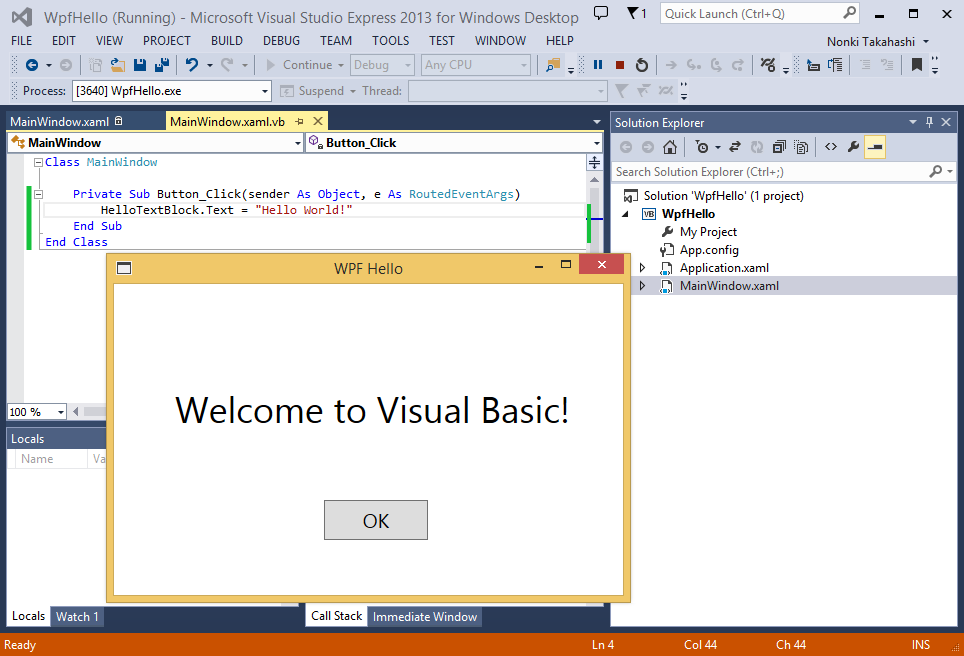Visual Basic
From its inception in 1991, the Visual Basic language has always been a phenomenal productivity tool for building applications. Almost 20 years later, it continues to provide easy access to the Microsoft .NET Framework, allowing developers to write applications that span desktops, phones, browsers and even the cloud with proficient speed.
Microsoft has shipped Visual Studio 2012, which incorporates version 11 of Visual Basic (sometimes referred to as VB 2012 or VB12). This release, the most powerful yet, contains numerous time-saving features that help developers get more done with fewer lines of code. Here’s everything you need to know to hit the ground running with Visual Basic in Visual Studio 2012. Visual Basic 2012 has a slightly new interface and the ability (provided that you have Windows 8) to create Windows 8 UI Apps.
Microsoft released Visual Basic 2013 with Visual Studio 2013 on October 17, 2013. This version supports .NET Framework 4.5.1. And Visual Studio 2013 Update 3 was released on August 4, 2014.
Microsoft released Visual Studio 2015 on July 20, 2015, November 30 2015 update 1, March 30, 2016, update 2, June 27, 2016 update 3.
Notable language features for VB.NET version 14.0
- Nameof provides a refactoring-safe way of getting the name of e.g. a parameter, member or type as a string.
- Using null-conditional operators, you can get a built-in null check while accessing and invoking members and indexers.
- String interpolation: String interpolation provides a concise way of describing string templates that insert expressions into format strings (C# only at Preview, both VB and C# at RTM).
- Methods, getter-only properties, etc., can now have a single expression as their body, just like lambdas.
- Auto-properties can have initializers and no longer require setters.
- Exception filters let you look at an exception and decide whether to catch it with a given catch block.
- Await now works in catch and finally blocks, obviating some very tricky workarounds.
Microsoft releases Visual Studio 2017 March 7, 2017. Extends support for new Visual Basic 15 language features, and introduces new refactorings that allow organizing source code with one action.
Notable language features for VB.NET version 15.0
- Create a Universal Windows Platform app for Windows 10 devices. Visual Studio 2017 provides a UWP app template for each language that lets you create a single project for all devices.
Microsoft released Visual Studio 2019 July 24, 2019 VB.NET version 16.
Visual Basic also has a version, VBA, that is implemented in Microsoft Office to develop custom programs and macros.
See Also
Wiki Resources
- Wiki: Visual Basic Portal
- Wiki: Development Portal
- [[Versions and Tags for Visual Basic]]
NOTE: the following links are external to TechNet Wiki.
Blogs
Forums
Web Pages
